Track Review: 2022 Alfa Romeo Giulia Quadrifoglio has still got it
In an era when so many vehicles are designed and engineered solely for transportation, the Alfa Romeo Giulia Quadrifoglio evokes genuine emotion, transforms a businessman into Tazio Nuvolari, and turns heads with its straight-from-Milan looks.
Since its founding in 1910, Alfa Romeo has been passionate about building high-performance automobiles. Yes, there have been highs and lows in quality, styling, and general availability for the U.S. market, but let’s not forget that this long-lived Italian outfit has gone toe-to-toe on the street and track with many automotive greats: Bugatti, Ferrari, Lotus, and Mercedes-Benz. After a long hiatus, Alfa returned to the U.S. market with the composite-bodied, mid-engine 4C sports car. The more mainstream Giulia luxury sedan followed for the 2016 model year, and Alfa made sure everyone took note by launching with a stunning, BMW M3–fighting Quadrifoglio. Packing a 2.9-liter, twin-turbo V-6 engine good for 503 hp, this clover-clad sport sedan elevated the standard for driving dynamics of this segment.
That was six years ago, and in that time we’ve seen Cadillac transform the ATS-V into the CT4-V Blackwing, BMW introduce a new buck-toothed M3, and Mercedes announce its intent to replace the roaring V-8 in the AMG C63 with a hybrid four-cylinder. The future of Alfa’s Giulia is uncertain at best, but in the meantime, the sweet-handling Quadrifoglio remains available.

Keen to experience this majestic Italian four-door once more before it’s gone, we borrowed one—painted red, of course—for a track test at western Michigan’s GingerMan Raceway. It’s a 2.2-mile racecourse known for being one of the safest tracks in the Midwest. With few walls to hit, increasing radius corners, progressive elevation changes and good visibility all around, novices feel comfortable coming up to speed, and experienced drivers feel comfortable giving it the beans. There are two main straightaways where speeds north of 100 mph are within reach, even for little four-cylinders like the VW Jetta GLI. The corner sections are sweepers and switchbacks which make for solid mid-speed work.
Specs: 2022 Alfa Romeo Giulia Quadrifoglio
- Price: $80,425 (including destination)
- Powertrain: 2.9-liter, twin-turbo V-6; eight-speed automatic transmission
- Horsepower: 505 @ 6500 rpm
- Torque: 443 lb-ft @ 2500–5000 rpm
- Layout: rear-wheel-drive, five-seat sedan
- Weight: 3806 pounds
- EPA-rated fuel economy: 17/25/20 (city/hwy/combined)
- 0–60 mph: 3.8 seconds
- Top speed: 191 mph
In a dark alley, the Quadrifoglio and the base Giulia could be mistaken for twins. The silhouette has bulges and curves maximizing the slipperiest of aerodynamics. Take a closer look and the Quadrifoglio reveals desirable features for the go-fast crowd—carved-out crevices on the hood, fascia, and fenders manage airflow to release and create pressure. The rear elevation follows suit with a subtle, carbon-fiber duckbill-spoiler and a pronounced diffuser flanked by a quad exhaust. These are no mock go-fast parts; Alfa says the top speed of the Quadrifoglio is north of 190 mph.

The visual trademark of the Quadrifoglio is Alfa’s clover badge (the name literally means “four-leaf”). First worn in 1923 at the Targa Florio, Alfa Romeo now reserves the four-leaf clover for select production models and race cars, like the world famous C38 Formula 1 car. The standard carbon-fiber hood further aids weight reduction, but unfortunately our Rosso Etna–colored steed did not have the carbon-fiber roof option. Purists will nod approvingly at the Scudetto grille and five-hole wheels.
Tugging on Giulia’s handle on a well-weighted door is a pleasant invitation to an attractive interior. The invitation abruptly ended when the carbon-fiber bucket seat’s thigh bolster speared my hamstrings. These optional thrones are a painful reminder that fashion sometimes hurts. Though decent for support during track driving, these lack the adjustability and general comfort for a daily-driver premium car.
The rest of interior is charming enough. A leather-wrapped dash frames “aluminum”-lined, deep-hooded analog gauges. It’s not the pinnacle of luxury, and at six-ish years old the design is feeling somewhat dated. But it gets the job done. The steering wheel seems a little large, but the rim is pleasantly thin and delicate. The myriad materials and visual elements—leather, Alcantara, carbon fiber, aluminum, a plastic red start/stop button, and the Quadrifoglio logo—add up to a byzantine presentation. Thankfully, the steering wheel feels appropriate once you grasp it in your hands, especially because within reach of your fingers there is a pair lengthy column-mounted (!) paddle shifters. A manual transmission would preferable, but here in the U.S. we were never offered the six-speed manual that Europe enjoyed. Between the seats is a carbon-fiber-flanked automatic shifter, controlling the eight-speed ZF automatic transmission.

The combination of carbon and piano black creates the feel of a swanky Milan hotel, but the touch screen and infotainment system are where your European vacation ends. It’s small, angled oddly, and it lags. Many settings are multiple sub-menus deep. Study up before your first drive, or you’ll end up pulling over, to look for your desired settings. It’s too bad Stellantis will not update this platform with the same UConnect interface used in Dodge’s performance line-up.
Of course, we did not source an Alfa to geek-out on tech or loll in a parking lot. We’re here to poke the man-eating serpent and sublimate tires. Press that Rosso start-stop button mounted on the steering wheel and the Ferrari-derived 2.9-liter 90-degree twin turbo V-6 emits a mellifluous rumble. The drive modes are arranged according to a cute DNA acronym, representing Dynamic, Natural, and Advanced efficiency, organized in order from wild to mild. Traction, shift points, exhaust flow/note, suspension damping, and torque vectoring are calibrated by the ECU to enhance or economize your experience. A fourth option with minimal electronic intervention and the most aggressive drive settings, known as Race mode, is engaged by that proverbial “Don’t do it!” button. You will be very much tempted to do it.
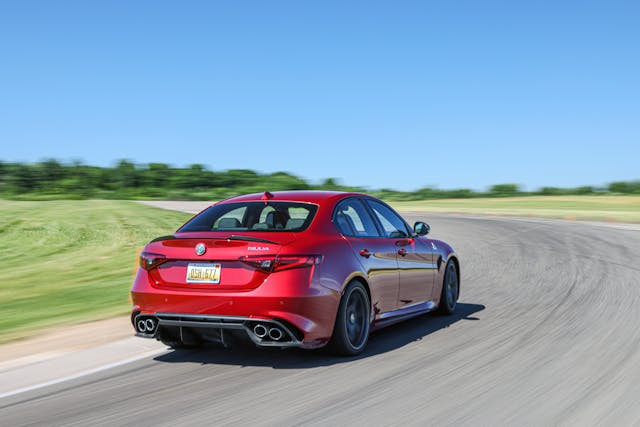
Having just swept an SCCA-sanctioned race weekend at GingerMan, I was feeling spirited and selected Dynamic mode for my first session. The sheer power generated from the twin turbos is astonishing and plasters the driver into the seat. Speeds of 100 mph, typically reserved for the main the straights, can easily be reached entering into four additional corners. The 443 lb-ft of torque thrusts you out of every corner, while the eight-speed transmission executes upshifts with brutal precision. I confess, I consider myself to be a manual transmission purist. A borderline snob. However, not having to use my clutch foot or have my right hand leave the steering was surprisingly refreshing.
In Dynamic mode, the powertrain control module will squeeze every ounce of revs through the upshifts. You can certainly short shift, but it is not as fun. With these settings, the computer will sit back and hand over full control of the downshifts, which means you can set yourself up for the right gear to optimize corner exit. The length and placement of the column-mounted paddles is perfect for managing gear selection for track driving. Even at a 40-degree steering angle there is sufficient length to the paddles that you won’t struggle to locate them.
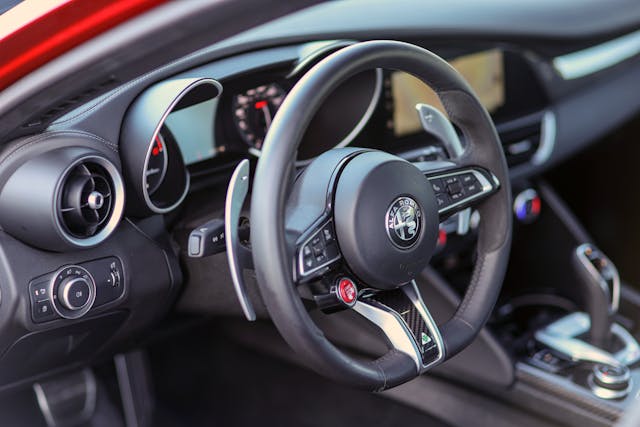
That paddle design is increasingly beneficial when you select Race mode. Upshifts are now solely the driver’s responsibility. Hold a gear as long as you want to but keep vigilant or quickly be conditioned to avoid the rev limiter. It is stupefying how content the engine is winding out to 6500 rpm, corner-after-corner, lap-after-lap. No overheating issues or warning bells, which was a real concern with early cars. The transmission cooler and aero design earning their keep, in our book.
“The balance is wonderful through the corners,” remarked executive editor Eric Weiner. “The Giulia dances on turn-in, the rear rotating slightly and the suspension compressing the littlest bit.” I have to agree; in both Dynamic and Race modes, the suspension is tight yet compliant. The damping settings give you key bits of information about body movement and weight transfer, yet the car remains steady and settled unless seriously provoked. In Race mode specifically, you can throw away all grip-based driving methods and freely roast the rear tires and hang the hind end loose, out of any corner and at any speed.
“The steering communicates sportiness and feedback with subtle changes in weight in response to speed, angle, and road surface. It’s noticeably different and more natural feeling than the molasses-heavy steering in the German cars, particularly Audi and Benz,” said Weiner. For a 3800-pound sedan, this is a surprisingly tossable machine.
Under braking, after some proper burnishing, the rotors boast savage stopping power. Deep into the brake zone of the final corner, after a nearly 2000-foot straight, deceleration from 140 mph to 55 mph gives you immense confidence. Unfortunately, the factory pad/rotor combination has a habit of wearing the pad quickly, and the national back-order on pads necessitates keeping that style of braking to a minimum. After all, you will still need to brake at some point while driving your Giulia home from the track.
A long and monotonous drive to Detroit was the perfect opportunity to experience the more relaxed side of this super-sedan. Amid a couple hours of chill highway cruising, I did submit to the urge to hear the symphony that can be played with the occasional punch-to-pass throttle mashes. There seem to be two camps regarding the Alfa’s exhaust note; I find it to be reminiscent of Ferrari and music to my ears, other on staff find it to sound strained (and a little flatulent) even at full blast, under load. Regardless, the acceleration one feels during a highway pass is supercar-thrilling.
As a premium performance sedan, the Quadrifoglio doesn’t chase numbers so much as it delivers a unique experience. It captured our attention and impressed us both off and on track. For a car introduced more six years ago, that alone is worth celebrating. We’ll miss you when you’re gone, dear Alfa.
2022 Alfa Romeo Giulia Quadrifoglio
Price: $80,425 / $87,120 (base / as-tested)
Highs: Italian good looks inside and out. Formidable acceleration with power outlay reminiscent of a Ferrari 488. Crisp handling on turn-in, balanced mid-corner grip, and a flirty rear-end on track-out with precise throttle modulation.
Lows: Skip the Sparco carbon-fiber-backed seats, which are neither adjustable nor comfortable enough for anything other than track work, and save $3500. Parts availability may delay the frequency of your trips to the track.
Takeaway: The Quadrifoglio delivers performance, passion, and beautiful styling. It’s a modern Alfa, through and through.



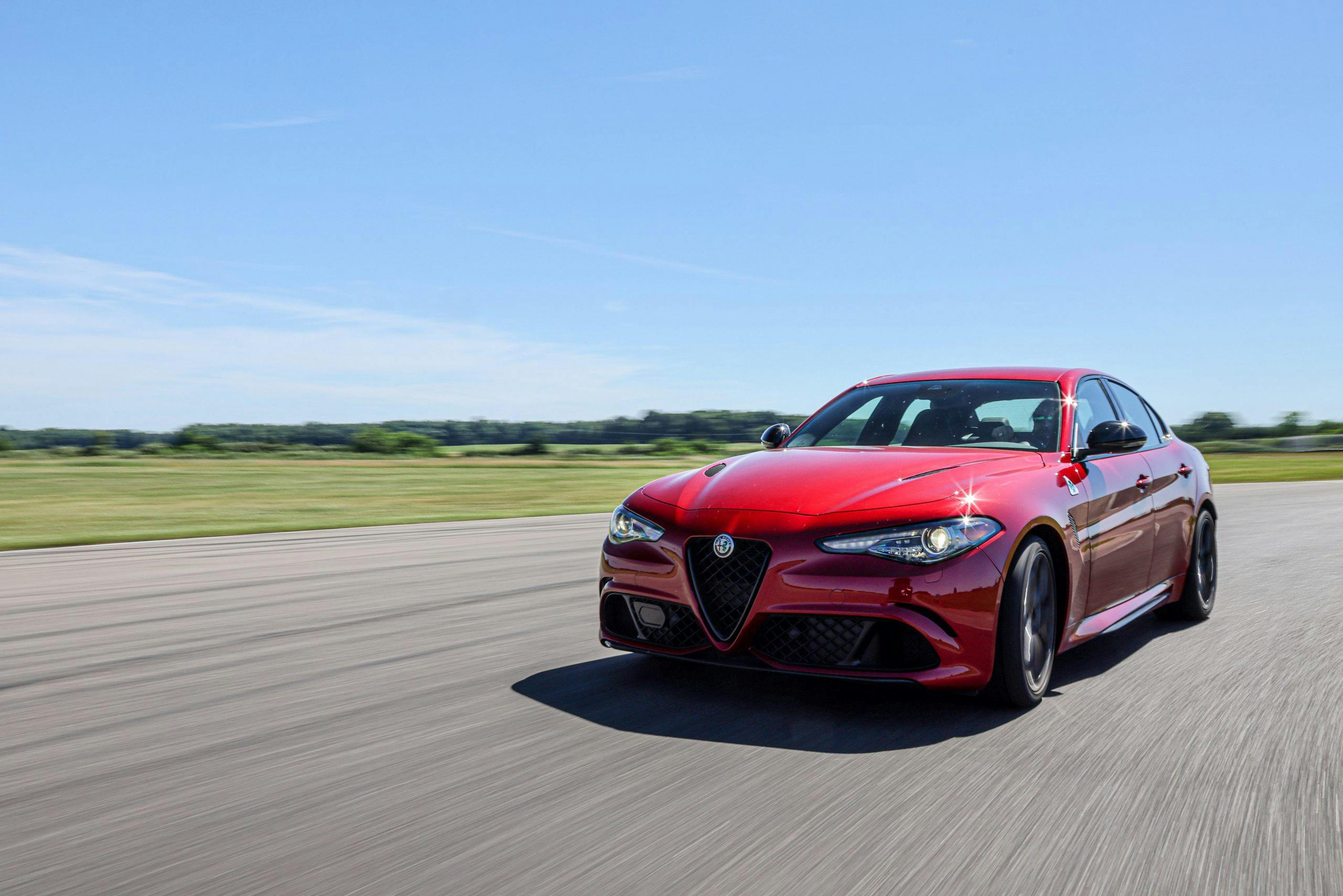
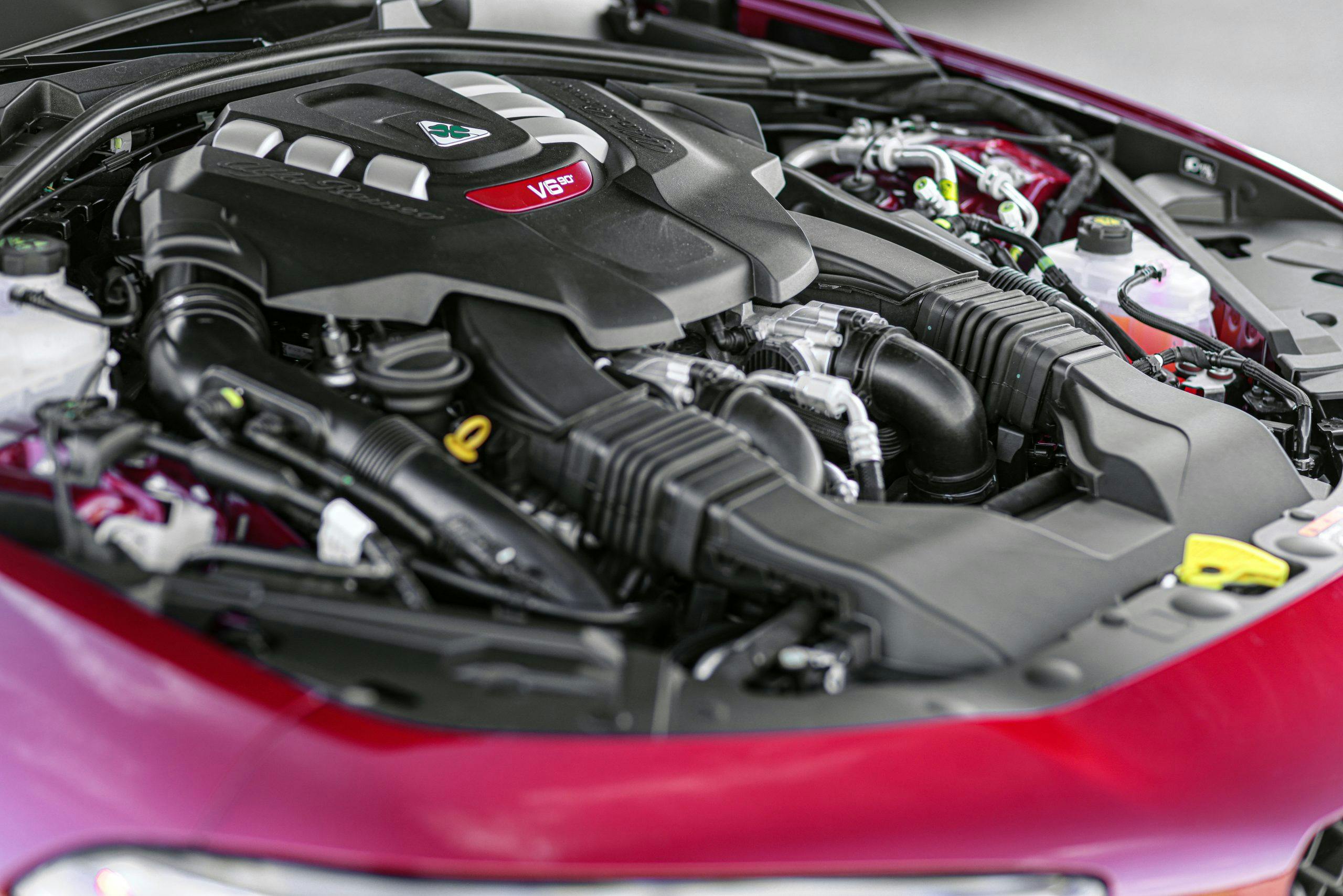
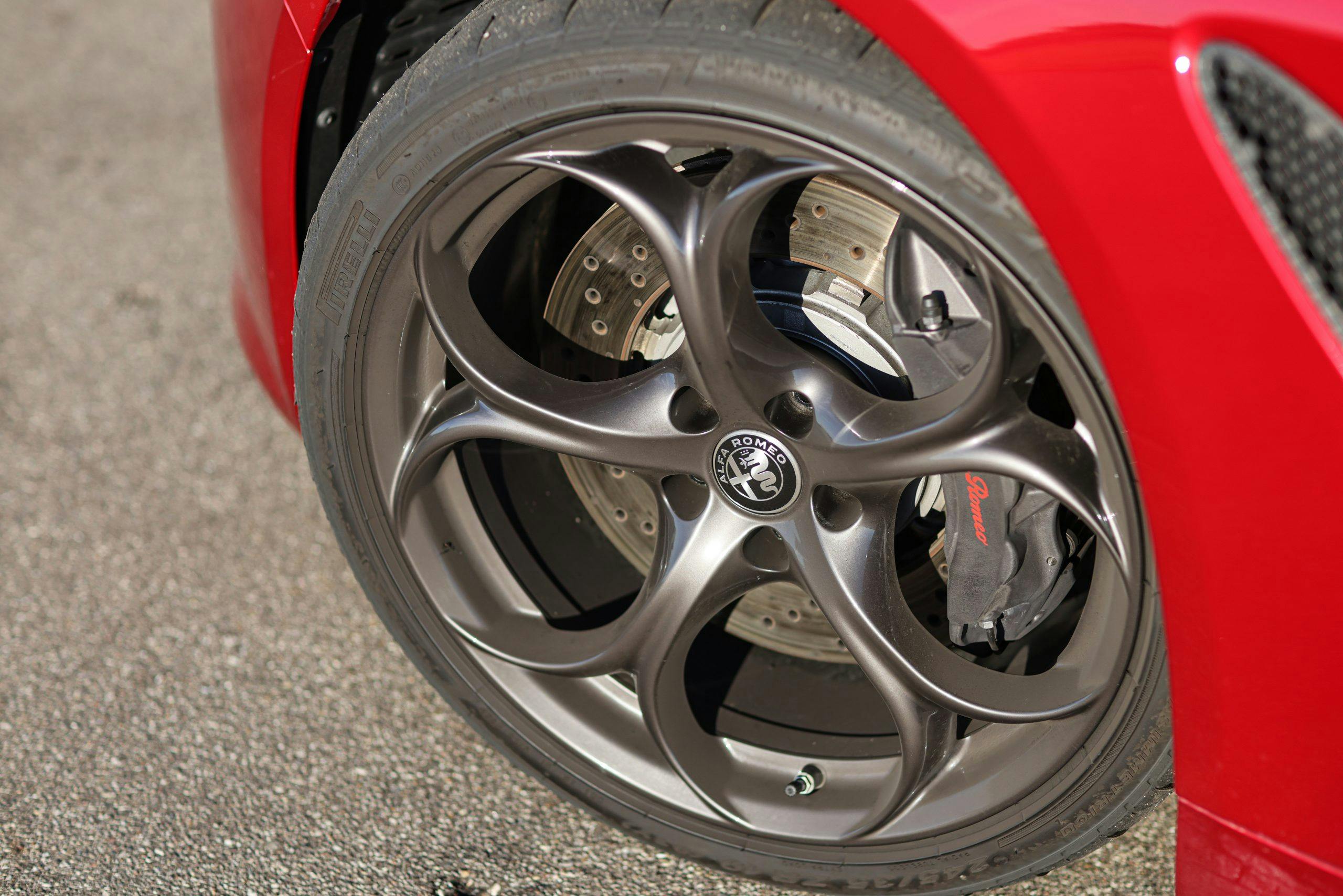
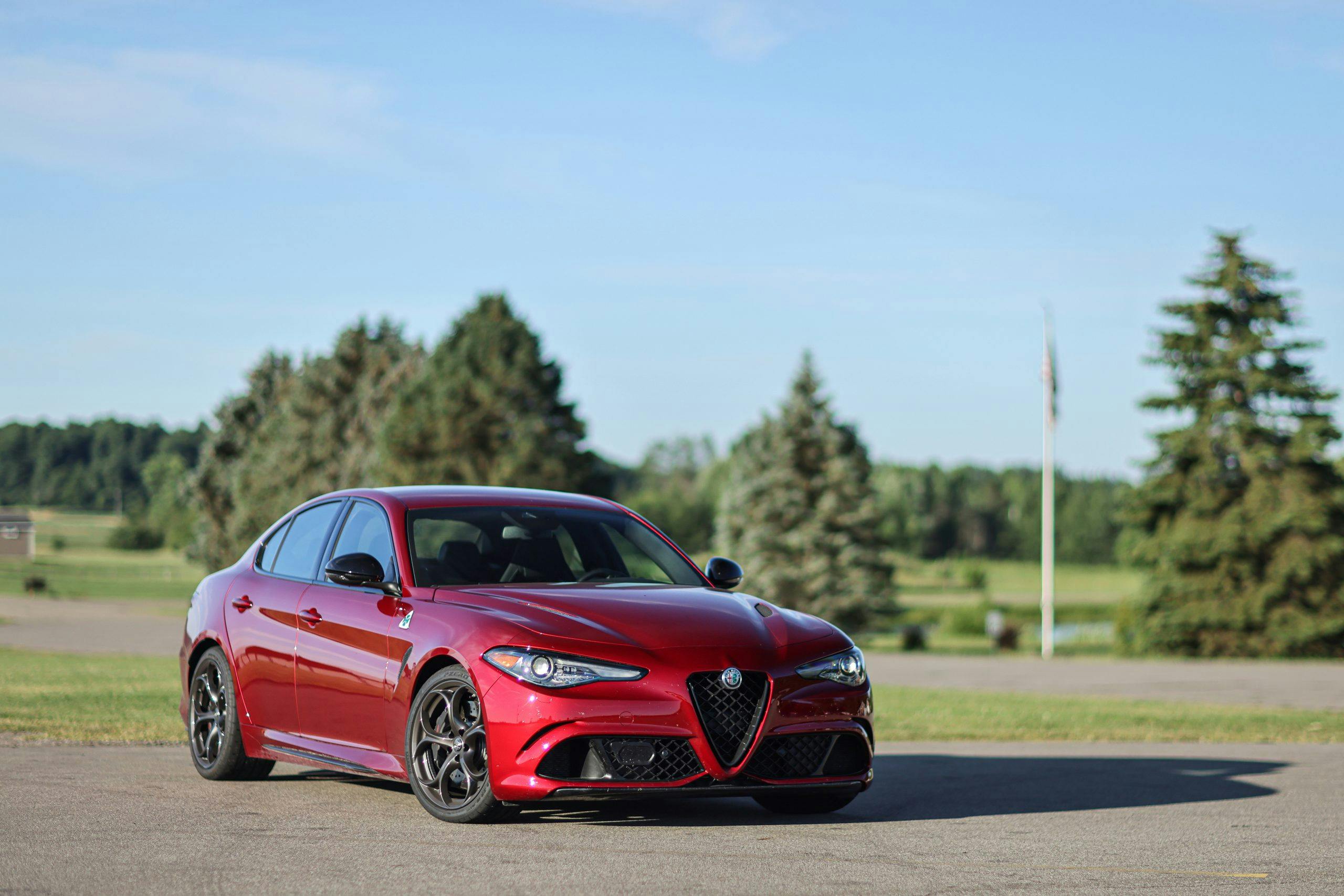
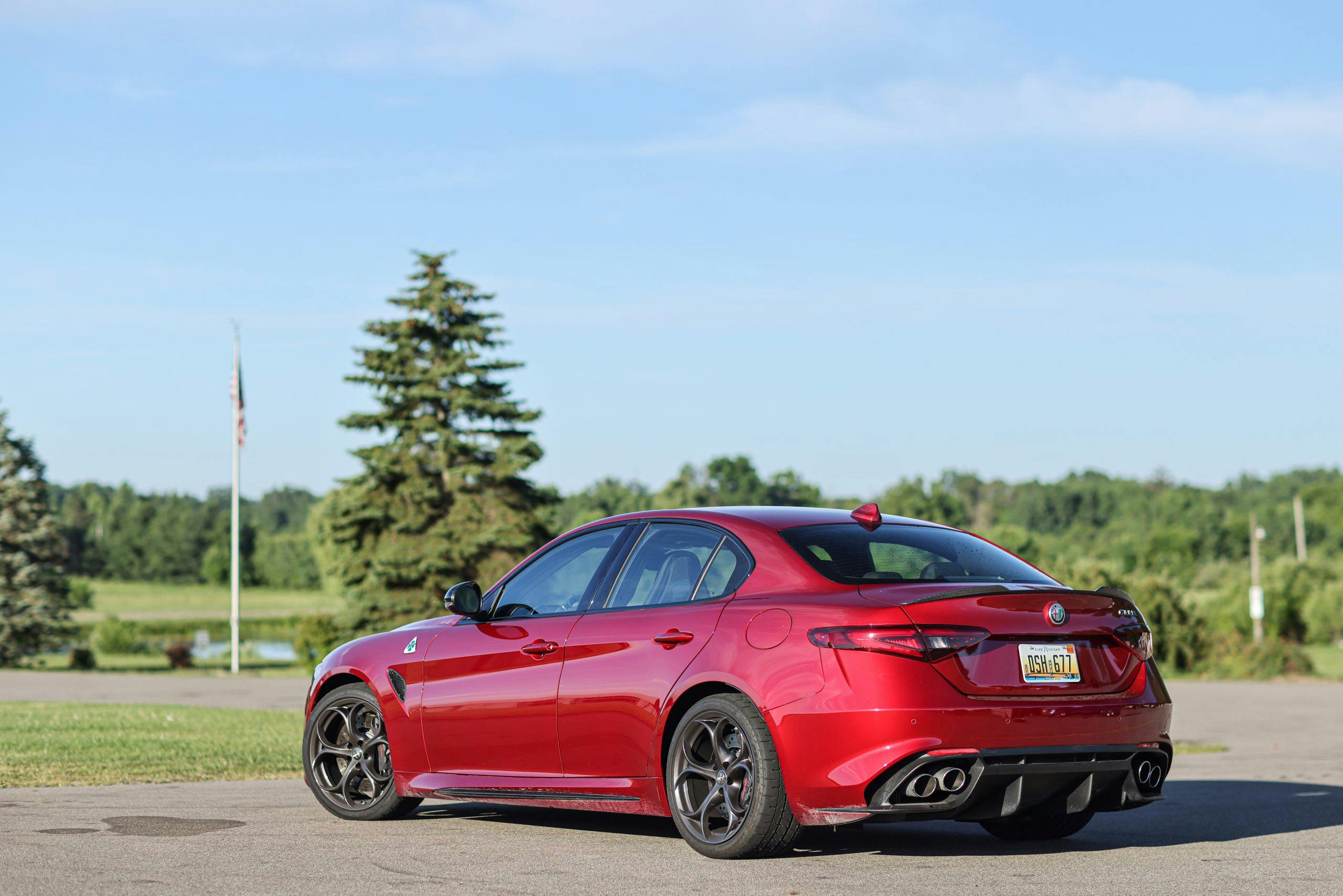
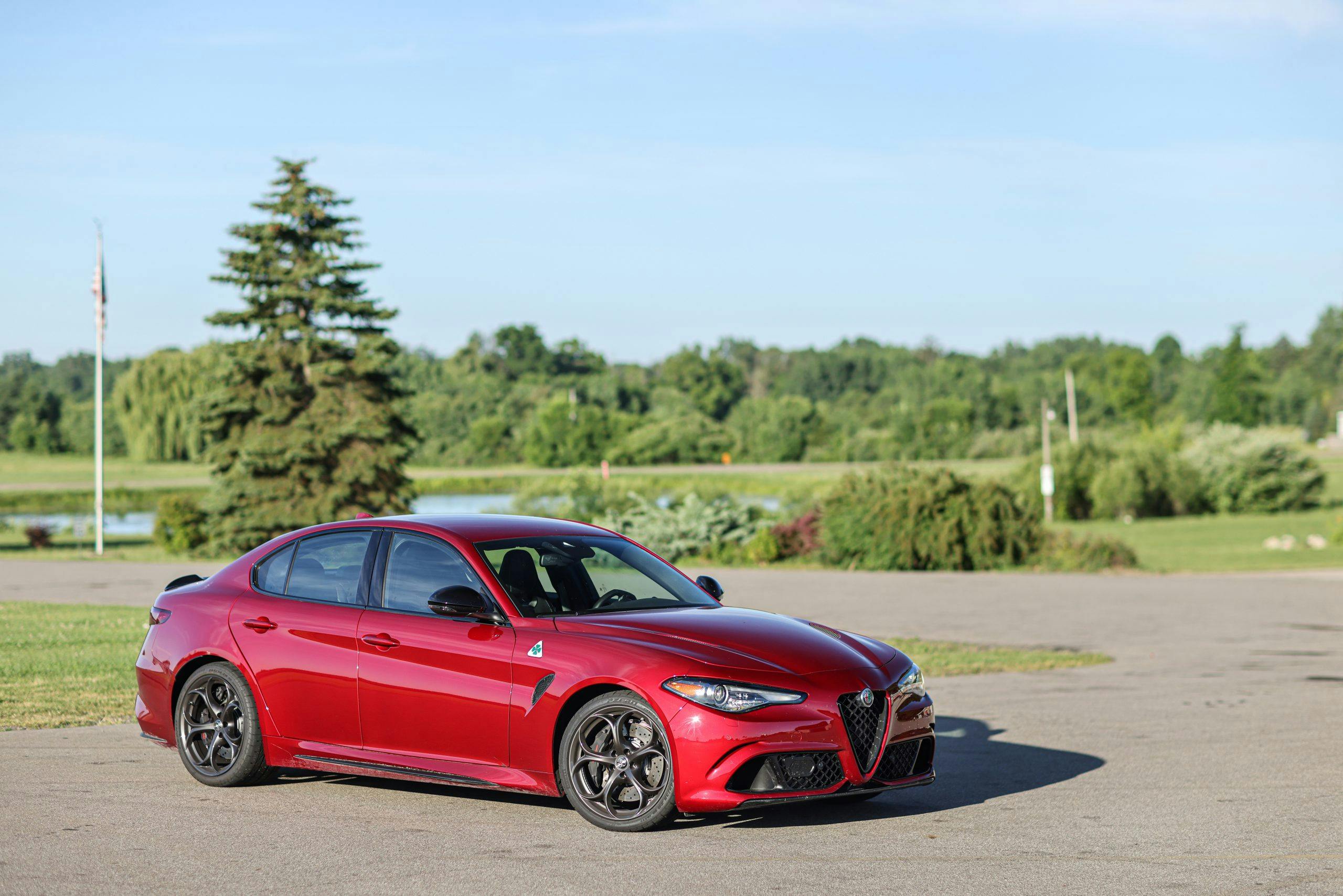
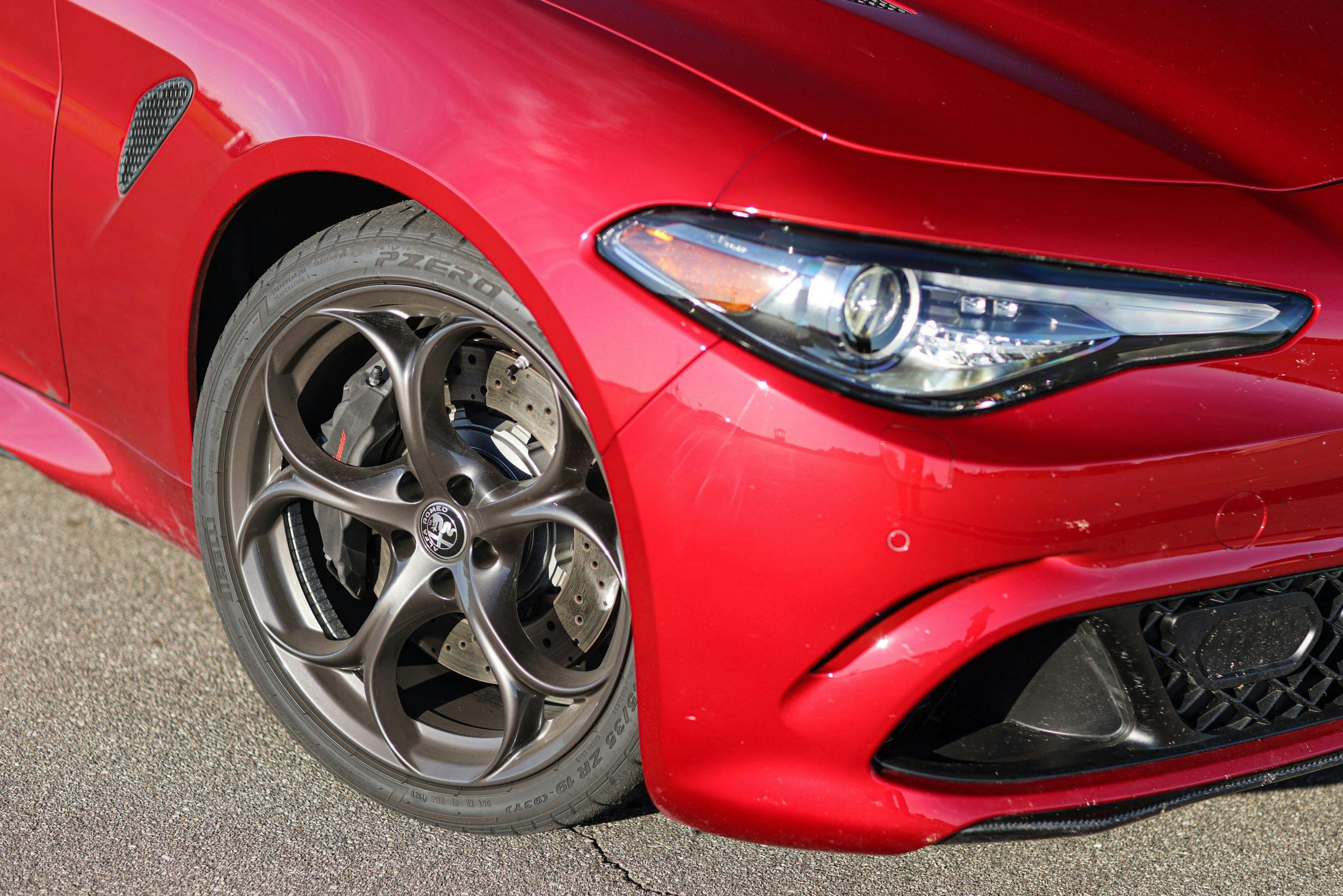

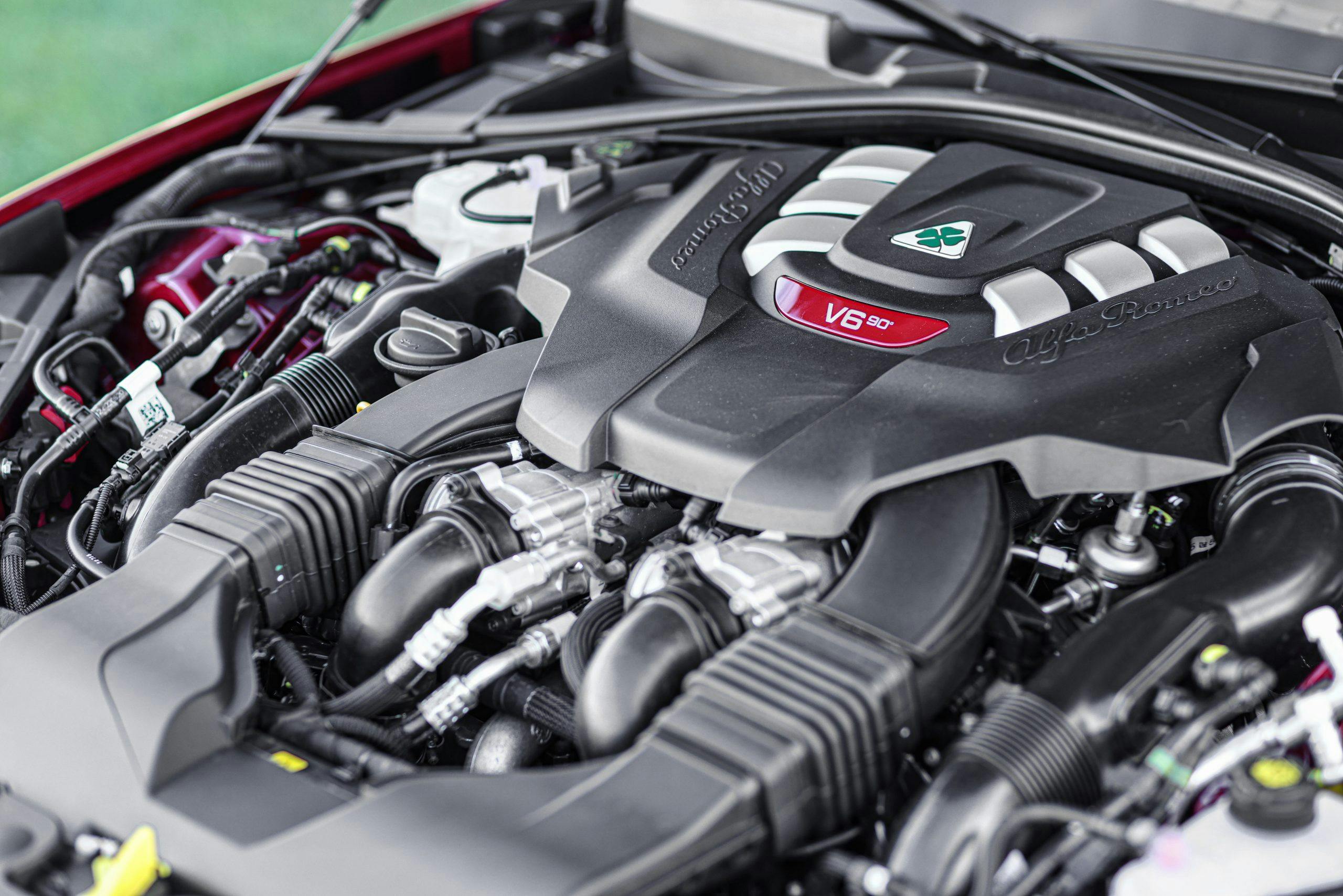


Didn’t think the Sparco seats were still an option, but yeah, the standard seats are much better and fortunately, power adjustable.
Surprised it wasn’t mentioned that this engine actually is the Ferrari V-8 with two cylinders lopped off. No wonder it sounds like a Ferrari….
For half price I can get a Mustang GT that will do all this. AND, the FORD dealer (1,000’s though out the country) will fix it if it goes pop. Oh and this is not a stylish car.
Last time I looked the Mustang was a two-door and not designed to carry four adults. At all. I also think very few would agree with your “not a stylish car” comment; I certainly do not.
I like this car a lot. Sadly Alfa “reliability” would prevent me from considering this vehicle.
Nice car. Looks great. Will never own an Alfa Romeo with an automatic transmission.